Helmet Mask Item Number: 919/1 from the MOA: University of British Columbia
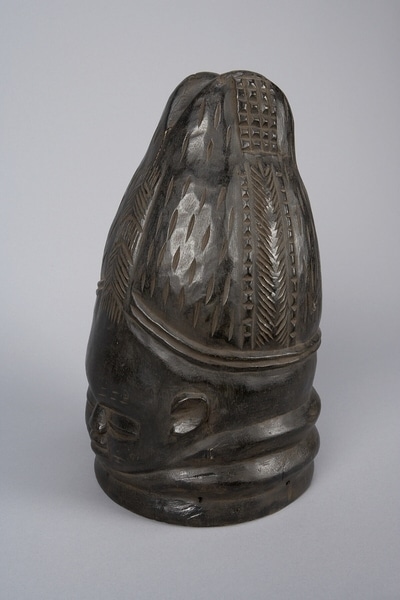
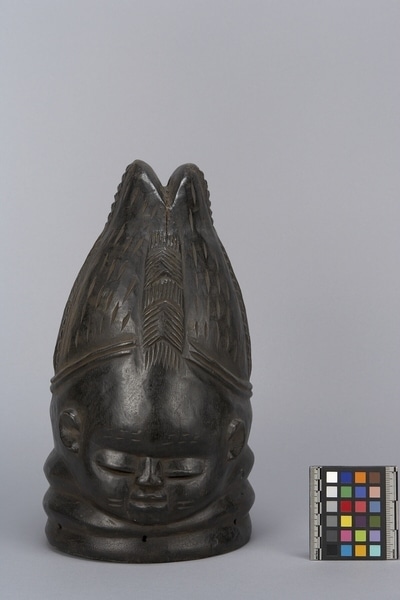
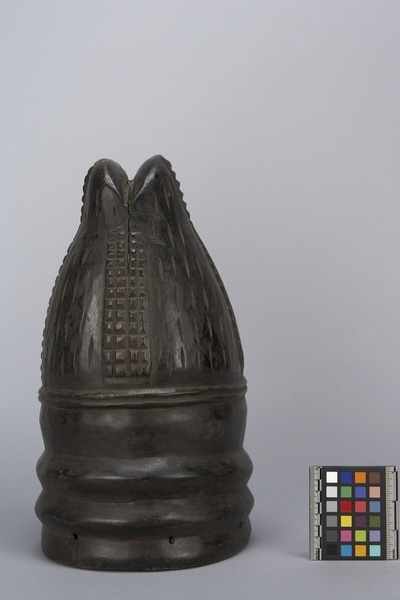
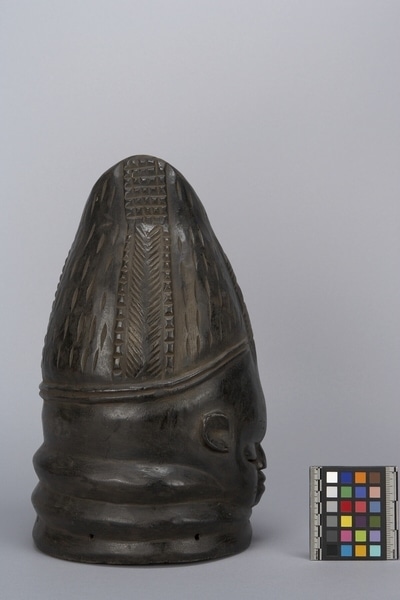
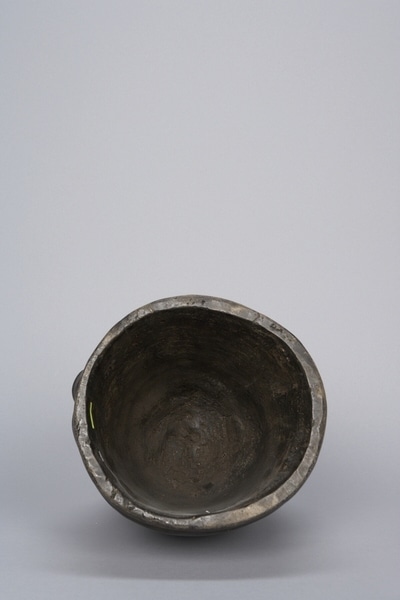
Description
Large, round, wooden helmet mask. Dark wood with slits carved for the eyes, a flat stubby nose and mouth, with a pair of horizontal lines carved on each cheek, and two rounded ears. It is carved with a large hair headdress with two rounded points, one at either side. There is a vertical row of upward pointing arrow lines in between vertical lines in the middle front of the hair. The sides have a vertical line of downward pointing arrow lines outlined with protruding pyramid-like shapes. The middle of the back also has a vertical row of carved out pyramid shapes. The hair has grooves carved out in between the designed vertical rows.
History Of Use
The sowei, or bundu, mask is made by men but worn as a dance mask by women in the Sande women's society, during girls' initiation camps. There they are prepared for marriage, trained in both domestic and economic pursuits and in singing and dancing. The masked dancers visit the camps to remind the girls of the ideals of female beauty and virtue. When the girls leave, they are considered to be women ready for marriage. During a dance, the mask is worn by a "ndoli jowei" performer, with a full costume concealing the dancer's identity.
Item History
- Made in Sierra Leone
- Collected during 1975
- Owned by Morton Beiser before January 17, 1983
- Received from Morton Beiser (Donor) on January 17, 1983
What
Who
- Culture
- Mende
- Previous Owner
- Morton Beiser
- Received from
- Morton Beiser (Donor)
Where
- Holding Institution
- MOA: University of British Columbia
- Made in
- Sierra Leone
When
- Collection Date
- during 1975
- Ownership Date
- before January 17, 1983
- Acquisition Date
- on January 17, 1983
Other
- Condition
- good
- Current Location
- Case 98
- Accession Number
- 0919/0001